- Home
- Tom Clancy
Carrier: A Guided Tour of an Aircraft Carrier Page 14
Carrier: A Guided Tour of an Aircraft Carrier Read online
Page 14
OFFICIAL U.S. NAVY PHOTO FROM THE COLLECTION OF A. D. BAKER
The first Cold War confrontation in which aircraft carriers played a major role was the Suez Crisis in 1956; carrier groups assigned to the U.S. Sixth Fleet spent the next year supporting operations by U.S. Marines and other forces trying to restore stability in Lebanon following the Arab-Israeli war. In 1958, Task Force 77 got a workout in the Far East when it interposed between the forces of Taiwan and Communist China during the crisis over the islands of Quemoy and Matsu. Meanwhile, two new follow-on supercarriers were ordered—Kitty Hawk (CVA-63) in 1956 and Constellation (CVA-64) in 1957. Essentially improved and enlarged Forrestal-class vessels, they approached the upper limits of size and capability for oil-fueled carriers. The time had come for a break with fossil-fueled power plants, and the carrier that followed was truly revolutionary.
The successful development of nuclear reactors to propel submarines encouraged the Navy to put them in surface ships. Backed by the mercurial Director of Naval Reactors, Vice Admiral Hyman Rickover, an improved Kitty Hawk design was developed to accommodate a nuclear propulsion plant. Ever eager to maximize the influence of nuclear power in the Navy, Admiral Rickover dictated that the new carrier should have just as many nuclear reactors (eight!) as there were oil-fired boilers in each Kitty Hawk-class carrier. When the new carrier, designated USS Enterprise (CVAN-65), was commissioned in the early 1960’s, she was so overpowered that the structure of the ship could not stand the pounding of a full-power run. There are stories of speed runs off the Virginia capes in which the Enterprise went so fast (some say over forty knots; the actual numbers are still classified), that she left her destroyer escorts far behind, without tapping her full power.
Though Enterprise more than lived up to the heritage of her proud name, she was to be a one-of-a-kind ship.28 Then-Secretary of Defense Robert S. MacNamara, no friend of the Navy, blocked construction of more nuclear-powered carriers. Over the next decade, only two new carriers, America (CVA-66) and John F. Kennedy (CVA-67), would be constructed. These flattops, essentially repeats of the earlier Kitty Hawk-class, were powered by oil-fired boilers. After MacNamara’s resignation in 1968, the ban on nuclear carrier construction lifted, and the Navy received authorization for a new class of three nuclear-powered attack carriers. This would become the mighty Nimitz-class (CVN-68) program.
A side view of an improved Nimitz-Class (CVN-68) nuclear-powered aircraft carrier.
JACK RYAN ENTERPRISES, LTD., BY LAURA DENINNO
The Nimitz-Class (CVN-68) Supercarriers
Because of the vast base of experience developed over the previous four decades, even before design of the Nimitz-class carriers began in the late 1960’s, the Naval Sea Systems Command (NAVSEA) had a number of good ideas about what they wanted from their next generation of flattops. Frankly, they wanted a lot! The largest warships (in dimensions and displacement) ever planned at the time, the Nimitz-class carriers were to be the ultimate expression of sea-based airpower. Some of the “fighting” qualities of the Nimitz-class included:• Aircraft Capacity—For over seventy-five years the value of a flattop has been measured by the number and types of aircraft it can carry. Ever since the Navy learned that the original USS Ranger was too small to carry a credible air wing, U.S. carrier designs have emphasized big flight and hangar decks to park, stow, and operate aircraft.28 In addition, growth in the size and weight of combat aircraft has driven the design of carriers. For example, an F4F Wildcat fighter of 1941 left the deck at a maximum weight of 7,952 lb/3,607 kg, but today’s F-14 Tomcat fighter has a maximum takeoff weight of 74,348 lb/33,724 kg! The Nimitz-class carriers were designed to handle ninety or more aircraft (though they currently operate with air groups of about seventy-five), depending on “spot factor” (the amount of deck space each aircraft type requires).
• Armament—Experience with heavy guns and long-range surface-to-air missile (SAM) batteries on earlier classes of aircraft carriers proved that the deck space, interior volume, manpower demands, and blast effects of such weapons interfered with air operations, the carrier’s true reason for existence. Therefore, weapons on newer carriers would be limited to point defense (i.e., “last ditch” self-defense) systems like the RIM-7 Sea Sparrow surface-to-air missile (SAM) and Mk. 15 Phalanx/CIWS 20mm automatic cannon. A few .50-caliber machine guns would also be mounted for defense against suicide motor boats or terrorist swimmers.
• Crew Size—For centuries, experience has shown that the more sailors you cram aboard a warship, the better her fighting qualities, especially when you need to repair battle damage. On the other hand, sailors take up a lot of space, and generate large “hotel” loads on the ship’s power plant (for electricity, water, heating, and cooling) that have nothing to do with fighting. Modern sailors are volunteers, who expect a minimum level of comfort. The Royal Navy’s eighteen-inch spacing between hammocks aboard warships two centuries ago may have worked for impressed seamen, but would hardly do for today’s sailors. Therefore, naval designers are constantly balancing the advantages of larger crews with the costs of personnel on ship size and capability. The Nimitz-class carriers would be designed to sail with about six thousand personnel on board: 155 officers and 2,980 sailors for the ship; 365 officers and 2,500 enlisted personnel for the air wing. Now add an admiral’s staff, a few dozen civilian contractors to maintain the high-tech equipment, and a constant trickle of distinguished visitors and media representatives, and a carrier can get really crowded!
• Deployability—Since a crisis may be halfway around the world, a carrier needs to go fast. On the other hand, high speed is worthless if the carrier does not carry sufficient fuel to get where it has to go without frequent refueling. The interior space consumed by a large power plant and its fuel is not available for aircraft, crew berthing, ammunition, jet fuel, and other useful stowage. In the final analysis, the choice of a nuclear power plant was a no-brainer. The Nimitz-class carriers were designed to carry two General Electric A4W/A1G nuclear reactors, and were expected to operate for fifteen years between refuelings.29 That’s up to one million nautical miles of steaming on just one set of reactor cores.
The carrier USS George Washington (CVN-73) conducting an underway replenishment (UNREP) from the fleet logistics ship USS Seattle (AOE-3). UNREP is a vital capability in keeping battle groups forward-deployed, and utilizes both “high lines” and helicopters to transfer cargo and fuel.
OFFICIAL U.S. NAVY PHOTO
• Sustainability—Once a carrier has reached an operating area, it must conduct operations for as long as possible without resupply since it may take weeks for fleet supply vessels to catch up with the carrier battle group. The enemy may not wait while you replenish at sea, so the amount of fuel, food, ammunition, and spare parts carried on board has a direct effect on how long a carrier can stay in action. It is also essential when fleet supply vessels reach the carriers; for when carriers are conducting Underway Replenishment (UNREP), basic safety rules dictate that they cannot operate aircraft or maneuver freely. Thus, the less often they take aboard fuel and supplies, the more time they can spend “on the line” conducting combat operations. The Nimitz-class carriers were designed to store up to nine thousand tons of jet fuel and almost two thousand tons of bombs, ammunition, and missiles. This is a vast improvement over earlier designs.
• Survivability—All of the above are worthless if the carrier is a blazing hulk about to turn turtle and sink. Nimitz-class carriers were designed in an era when the threat of Soviet cruise missiles and torpedoes armed with 1,000-kg/2,200-lb warheads was quite real. These weapons could blow a cruiser or destroyer in half, and do considerable harm to an aircraft carrier. The Navy was especially conscious of these dangers after three deadly fires aboard USN carriers during the Vietnam War had taken a high toll of lives, aircraft, and equipment. Remember that these ships are basically big boxes filled with explosives, jet fuel, and people, all packed tightly together. With all this in mind, the NAVSEA designers went
to extreme lengths to make the new carriers both durable and survivable. The flight and hangar decks, as well as the hull, would be built from high-tensile steel, with a vast scheme of compartmentation and built-up structure. In addition, the new flattop would make only minimal use of light metals like aluminum, which are flammable under some easily reached fire conditions.
By the late 1960’s the characteristics of what was initially known as SCB-102 (Ship Control Board Design 102) were firming up, with the following providing some idea of what the Navy desired:• Displacement—Approximately 95,000 tons fully loaded.
• Size—A length of 1,092 feet/332.9 meters, beam of 134 feet/40.85 meters, a flight deck width of 250 feet/76.5 meters, and a maximum loaded draft of no more than 39 feet/11.9 meters.
• Power Plant—Two Westinghouse A4W nuclear reactors driving four General Electric steam turbines, turning four screws for a total of 280,000 shp. While the top speed is still classified, it is well over thirty-three knots.
• Manning—SCB-102 provided for a ship’s company of 2,900 enlisted personnel and 160 officers. Room was additionally provided for two thousand air wing personnel, thirty Marines, and seventy members of the flag staff. This added up to almost 5,200 embarked personnel.
• Aircraft Complement—Approximately ninety aircraft. These would include improved models of aircraft like the F-4 Phantom II, A-6 Intruder, A-7 Corsair II, and E-2 Hawkeye, as well as newer and larger planes like the F-14 Tomcat, S-3 Viking, and EA-6B Prowler.
• Defensive Armament—Three eight-round RIM-7 Sea Sparrow SAM point-defense missile systems.
All of these features added up to the biggest class of warships ever built. Only the Enterprise had dimensions, displacement, and performance anything like the proposed SCB-102 design, and “the Big E” was lugging around eight nuclear reactors, the power of which could not be fully used. SCB-102 would be a much better balanced design—a fully integrated warship that would grow and modernize as the Cold War moved into the post-Vietnam era.
On the other hand, this very impressive package was going to be expensive and difficult to build. Because of foreign competition, America’s private shipbuilding industry was in decline during the late 1960’s. At the same time, government-owned yards run by the Navy were getting out of the ship construction business altogether to concentrate on overhauls and modernization work. This meant that only one shipyard in America was large enough to build the ships of the SCB-102 design—Newport News Shipbuilding (NNS) in Virginia. By 1967, NNS had been awarded a sole-source contract for the initial units of the new Nimitz class (CVN- 68). These eventually included the lead ship, which was named for the World War II Commander in Chief of the Pacific Fleet (CINCPAC), Admiral Chester Nimitz, and two other ships would be the Dwight D. Eisenhower (CVN-69—named for the former President) and the Carl Vinson (CVN-70—named for the Georgia senator and political architect of America’s World War II “Two Ocean Navy”).
Secretary of the Navy John Lehman, who headed the Navy Department from 1981 to 1986 during the Administration of President Ronald W. Reagan.
OFFICIAL U.S. NAVY PHOTO FROM THE COLLECTION OF A. D. BAKER
It would, however, be years until all three of the new ships were completed. Labor strikes and management problems plagued the construction of Nimitz, which took over seven years to complete (compared with four years for Enterprise). All three ships wound up costing hundreds of millions of dollars more than planned, making them fat targets for Congressional critics of Pentagon “fraud, waste, and abuse.” The multi-billion-dollar price tag of the new ships meant that new carriers were going to be hard to sell to a nation that increasingly saw the military as a liability. In fact, not one new carrier was authorized by the Administration of President Jimmy Carter. However, a fourth unit of the Nimitz class, Theodore Roosevelt (CVN-71—after the late President and father of the “Great White Fleet”), was forced upon President Carter by Congress, who funded the unit in Fiscal Year 1980 (FY-80). Others would follow.
The election of President Ronald Reagan launched a period of rebirth for the Navy. This rebirth, directed at the perceived threat of a growing and aggressive Soviet “Evil Empire,” was the personal achievement of one man: then-Secretary of the Navy John Lehman. Lehman, himself a Naval aviator and heir to the wealth of a great Wall Street investment firm, called for a “600 Ship Navy,” with fifteen aircraft carriers at its core.30 Fiscal Year 1983 (FY-83) saw the authorization of two Nimitz-class nuclear-powered aircraft carriers, Abraham Lincoln (CVN-72) and George Washington (CVN-73). Navy leaders dubbed this program the “Presidential Mountain,” because three of the presidents honored are carved on the Mount Rushmore monu-ment,and were strong supporters of the Navy.31 Along with the three new carriers, over a hundred new nuclear submarines, guided-missile cruisers, destroyers, frigates, and support ships were authorized by the end of the 1980’s. It was the biggest Naval building program since the Second World War.
Before the “Presidential Mountain” was completed, the global oceanic conflict they were designed to fight (or deter, if you thought that way) evaporated. With the end of the Cold War in 1991, the supercarriers acquired new roles and missions. In operations like Desert Shield/Desert Storm (Persian Gulf—1990/1991) and Uphold Democracy (Haiti—1994), they showed their great staying power and flexibility. Meanwhile, two more Nimitz-class carriers had been authorized in FY-88 to replace the last two units of the Midway class. This was just enough to keep the NNS shipyard alive. By the early 1990’s it was time to plan on replacing the fossil-fueled carriers like Forrestal (CV-59) and America (CV-66), which were due to retire. Though at one point the Clinton Administration cut the number of carriers to eleven, the number was eventually stabilized at an even dozen (considered the minimum needed to sustain two or three forward-deployed carrier battle groups). In addition, in FY-95, another Nimitz-class ship was authorized, rounding out the third group of three. These three ships, John C. Stennis (CVN-74), Harry S. Truman (CVN-75), and Ronald Reagan (CVN-76), will hold the force level at twelve.32
In many ways, the Nimitz-class ships represent a “worst-case” design, able to accommodate the most difficult conditions and threats. Designed against a Cold War expectation of immense Soviet conventional and nuclear firepower, they are almost too much warship for an age where there is no credible threat against them. Whether America needs so much capability right now and in the near future is a matter I’ll take up shortly. Meanwhile, let’s look at how these great ships are put together.
Newport News Shipbuilding: Home of the Supercarriers
The Virginia Tidewater has been a cradle of American maritime tradition for almost four centuries. The first English colony in North America was established in 1607 on the south bank of the York Peninsula at Jamestown. Later, Hampton Roads was the scene of the world’s first fight between ironclad ships, when the USS Monitor and CSS Virginia dueled in 1862.33 Across the James River is the port of Norfolk, the most important naval base in the United States. And along the north bank of the James River is the town of Newport News, a twenty-mile-long snake-shaped community that is the birth-place of American aircraft carriers.
The nuclear-powered aircraft carrier Harry S. Truman (CVN-75) being constructed at Dry Dock 12 in the Newport News Shipbuilding (NNS) yard. The large bridge crane in the foreground is used to place superlifts and other components into the dock.
OFFICIAL U.S. NAVY PHOTO
As you drive from Interstate 64 south onto Interstate 664, the yard makes its first appearance in the form of the huge pea-green-painted construction cranes that dominate the skyline of the city. And then as you turn off onto Washington Avenue, you will see the name on those cranes: Newport News Shipbuilding. Founded in 1886 by Collis P. Huntington, Newport News Shipbuilding (NNS) is the largest and most prosperous survivor of the American shipbuilding industry.34 Seven of the battleships in “Teddy” Roosevelt’s “Great White Fleet” were built here. Now one of just five U.S. yards still building deep-draft warships, NNS is t
he largest private employer in the state of Virginia, with some eighteen thousand workers (about half of the Cold War peak). The builder of the Ranger (CV-4—America’s first carrier built from the keel up), NNS is the last U.S. shipyard capable of building big-deck nuclear carriers. Like most shipyards, NNS was originally built along a deep-channel river with inclined construction ways. Many of the original machine shops and dry docks are still in use after over a century of service. However, the facility has gradually been rebuilt into one of the most technically advanced and efficient shipyards in the world.
On the northern end of the yard you find the building area for aircraft carriers and other large ships. The centerpiece of this area is Dry Dock 12, where deep-draft ships are constructed. Almost 2,200 feet/670.6 meters long and over five stories deep, it is the largest construction dock in the Western Hemisphere. The entire area is built on landfill, with a concrete foundation supported on pilings driven through the James River silt into bedrock several hundred feet below. The concrete floor of Dry Dock 12 is particularly thick, to bear the immense weight of the ships built there. The end of the dock extends into the deep channel of the river, and is sealed off by a removable caisson (a hollow steel box). Running on tracks the length of Dry Dock 12 is a huge bridge crane, capable of lifting up to 900 tons/816.2 metric tons, while a number of smaller cranes run along the edge of the building dock. Dry Dock 12 can be split into two watertight sections by the movable caisson, so that one carrier and one or more smaller ships can be constructed at the same time.

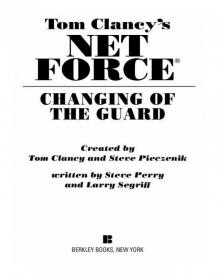 Changing of the Guard
Changing of the Guard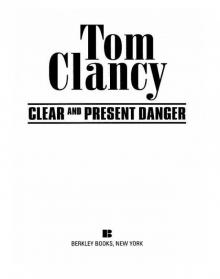 Clear and Present Danger
Clear and Present Danger Hounds of Rome
Hounds of Rome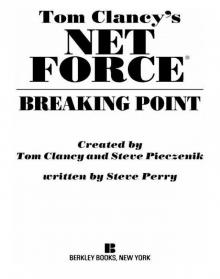 Breaking Point
Breaking Point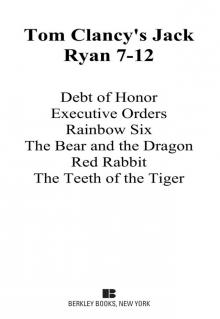 Tom Clancy's Jack Ryan Books 7-12
Tom Clancy's Jack Ryan Books 7-12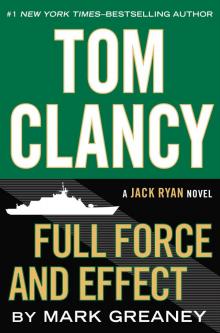 Full Force and Effect
Full Force and Effect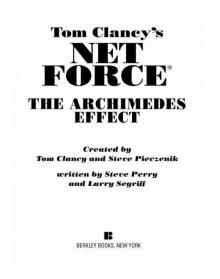 The Archimedes Effect
The Archimedes Effect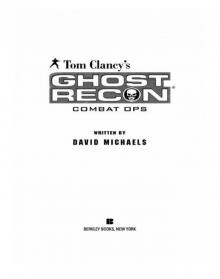 Combat Ops
Combat Ops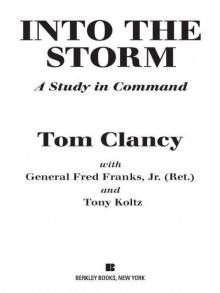 Into the Storm: On the Ground in Iraq
Into the Storm: On the Ground in Iraq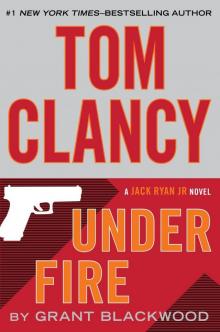 Under Fire
Under Fire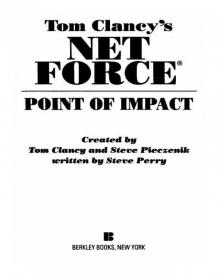 Point of Impact
Point of Impact Red Rabbit
Red Rabbit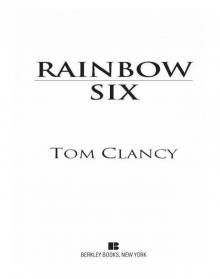 Rainbow Six
Rainbow Six The Hunt for Red October
The Hunt for Red October The Teeth of the Tiger
The Teeth of the Tiger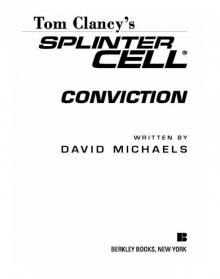 Conviction (2009)
Conviction (2009)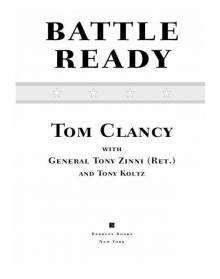 Battle Ready
Battle Ready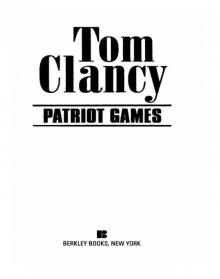 Patriot Games
Patriot Games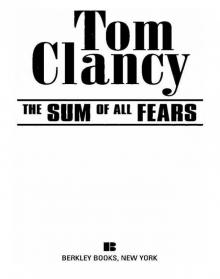 The Sum of All Fears
The Sum of All Fears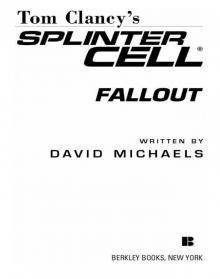 Fallout (2007)
Fallout (2007)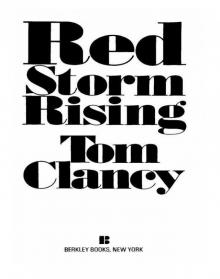 Red Storm Rising
Red Storm Rising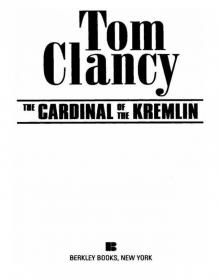 The Cardinal of the Kremlin
The Cardinal of the Kremlin Executive Orders
Executive Orders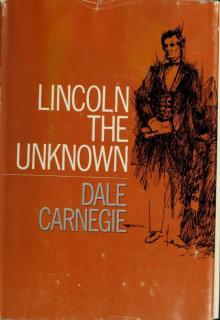 Lincoln, the unknown
Lincoln, the unknown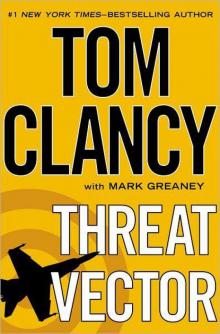 Threat Vector
Threat Vector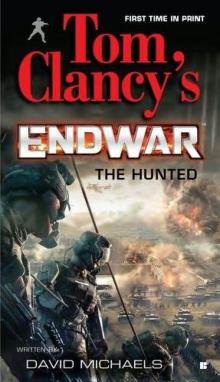 The Hunted
The Hunted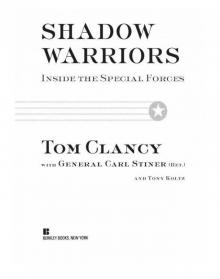 Shadow Warriors: Inside the Special Forces
Shadow Warriors: Inside the Special Forces End Game
End Game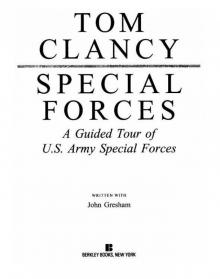 Special Forces: A Guided Tour of U.S. Army Special Forces
Special Forces: A Guided Tour of U.S. Army Special Forces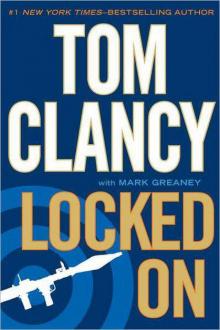 Locked On
Locked On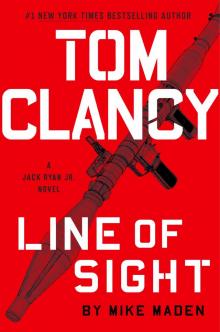 Line of Sight
Line of Sight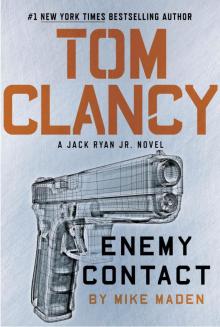 Tom Clancy Enemy Contact - Mike Maden
Tom Clancy Enemy Contact - Mike Maden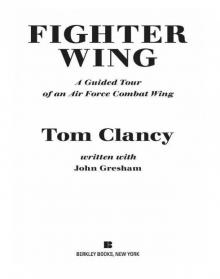 Fighter Wing: A Guided Tour of an Air Force Combat Wing
Fighter Wing: A Guided Tour of an Air Force Combat Wing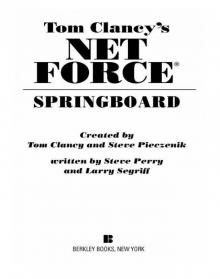 Springboard
Springboard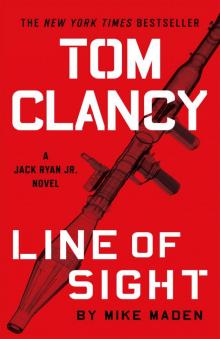 Line of Sight - Mike Maden
Line of Sight - Mike Maden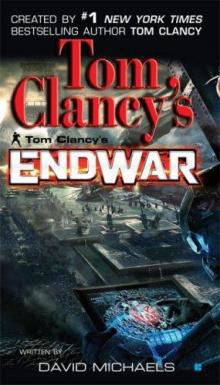 EndWar
EndWar Dead or Alive
Dead or Alive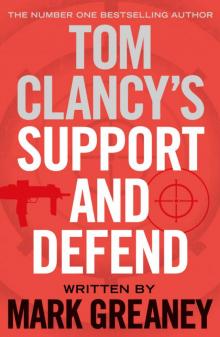 Tom Clancy Support and Defend
Tom Clancy Support and Defend Checkmate
Checkmate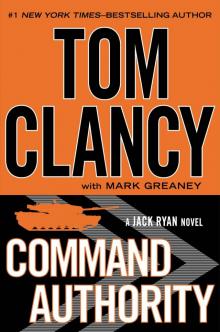 Command Authority
Command Authority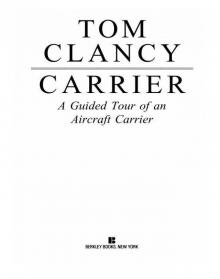 Carrier: A Guided Tour of an Aircraft Carrier
Carrier: A Guided Tour of an Aircraft Carrier Blacklist Aftermath
Blacklist Aftermath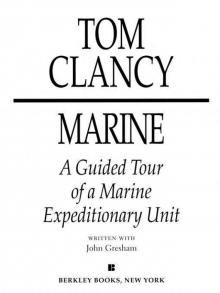 Marine: A Guided Tour of a Marine Expeditionary Unit
Marine: A Guided Tour of a Marine Expeditionary Unit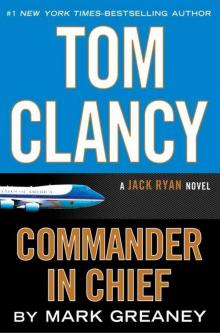 Commander-In-Chief
Commander-In-Chief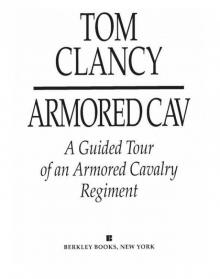 Armored Cav: A Guided Tour of an Armored Cavalry Regiment
Armored Cav: A Guided Tour of an Armored Cavalry Regiment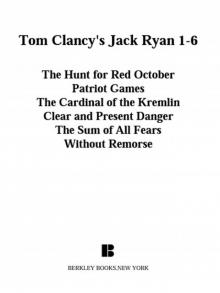 Tom Clancy's Jack Ryan Books 1-6
Tom Clancy's Jack Ryan Books 1-6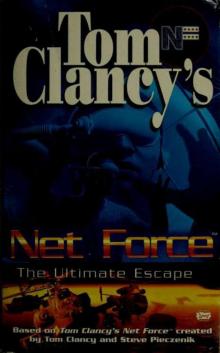 The Ultimate Escape
The Ultimate Escape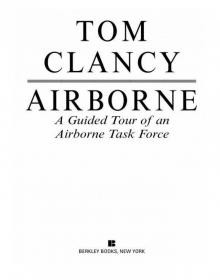 Airborne: A Guided Tour of an Airborne Task Force
Airborne: A Guided Tour of an Airborne Task Force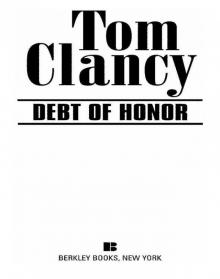 Debt of Honor
Debt of Honor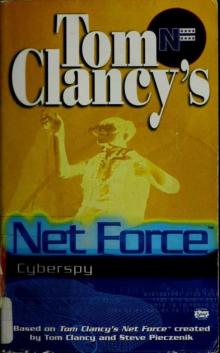 Cyberspy
Cyberspy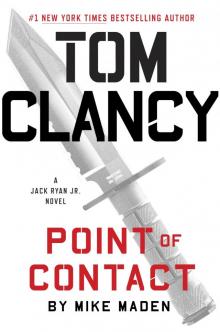 Point of Contact
Point of Contact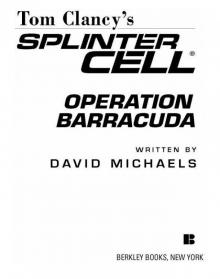 Operation Barracuda (2005)
Operation Barracuda (2005)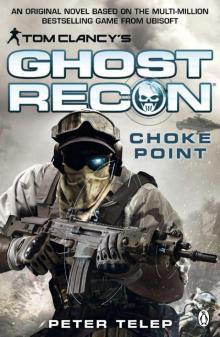 Choke Point
Choke Point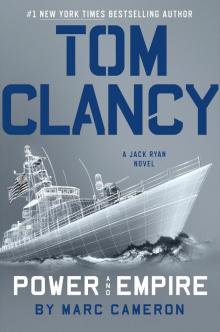 Power and Empire
Power and Empire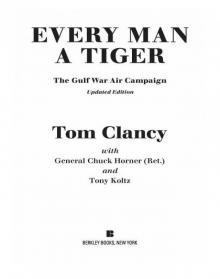 Every Man a Tiger: The Gulf War Air Campaign
Every Man a Tiger: The Gulf War Air Campaign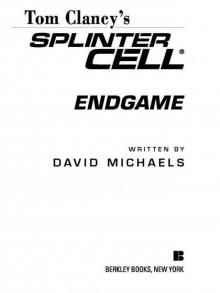 Endgame (1998)
Endgame (1998)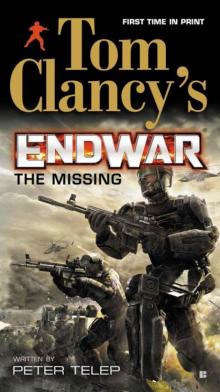 EndWar: The Missing
EndWar: The Missing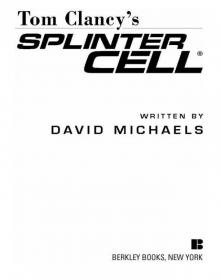 Splinter Cell (2004)
Splinter Cell (2004)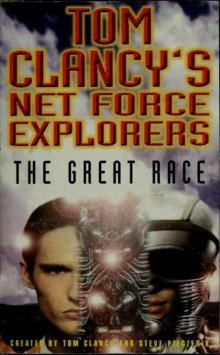 The Great Race
The Great Race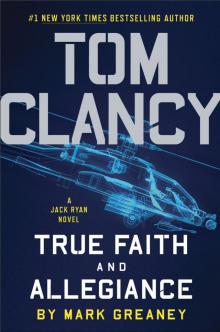 True Faith and Allegiance
True Faith and Allegiance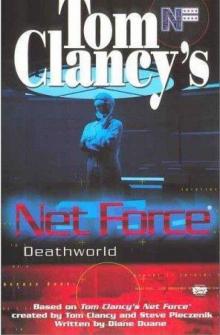 Deathworld
Deathworld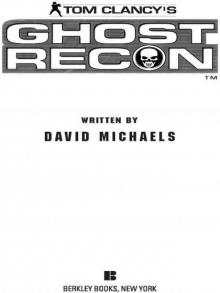 Ghost Recon (2008)
Ghost Recon (2008)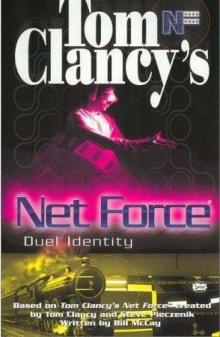 Duel Identity
Duel Identity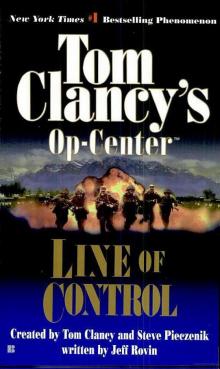 Line of Control o-8
Line of Control o-8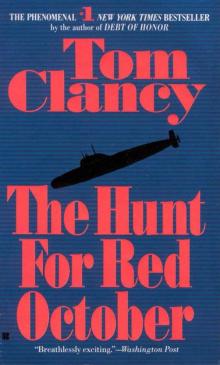 The Hunt for Red October jr-3
The Hunt for Red October jr-3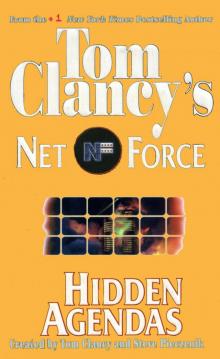 Hidden Agendas nf-2
Hidden Agendas nf-2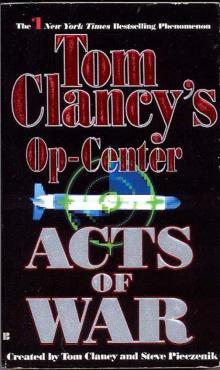 Acts of War oc-4
Acts of War oc-4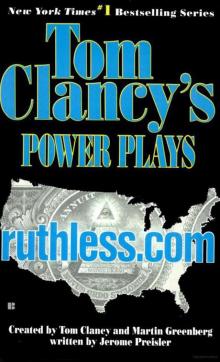 Ruthless.Com pp-2
Ruthless.Com pp-2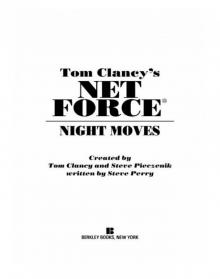 Night Moves
Night Moves The Hounds of Rome - Mystery of a Fugitive Priest
The Hounds of Rome - Mystery of a Fugitive Priest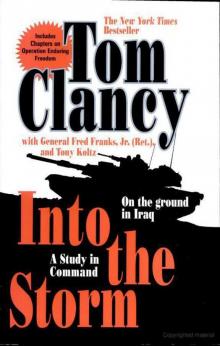 Into the Storm: On the Ground in Iraq sic-1
Into the Storm: On the Ground in Iraq sic-1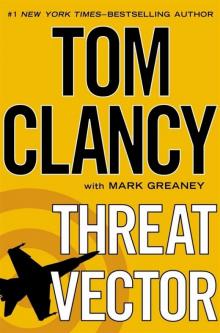 Threat Vector jrj-4
Threat Vector jrj-4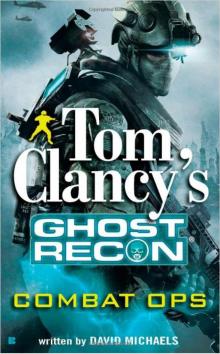 Combat Ops gr-2
Combat Ops gr-2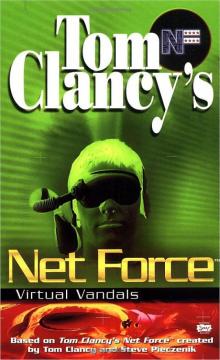 Virtual Vandals nfe-1
Virtual Vandals nfe-1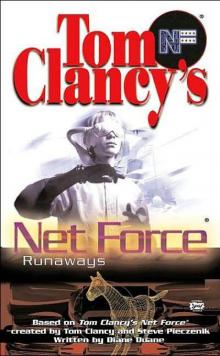 Runaways nfe-16
Runaways nfe-16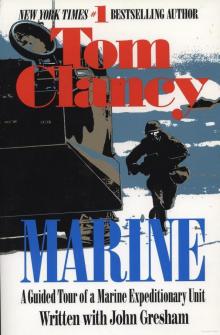 Marine: A Guided Tour of a Marine Expeditionary Unit tcml-4
Marine: A Guided Tour of a Marine Expeditionary Unit tcml-4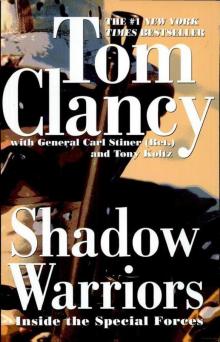 Shadow Warriors: Inside the Special Forces sic-3
Shadow Warriors: Inside the Special Forces sic-3 Jack Ryan Books 1-6
Jack Ryan Books 1-6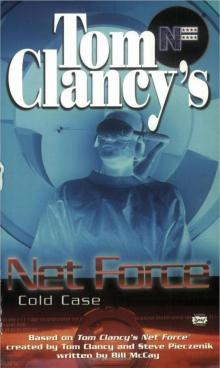 Cold Case nfe-15
Cold Case nfe-15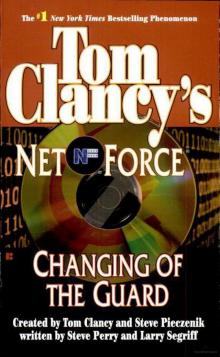 Changing of the Guard nf-8
Changing of the Guard nf-8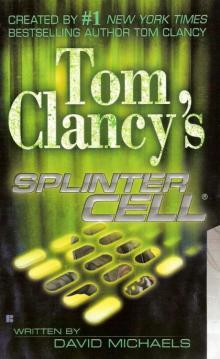 Splinter Cell sc-1
Splinter Cell sc-1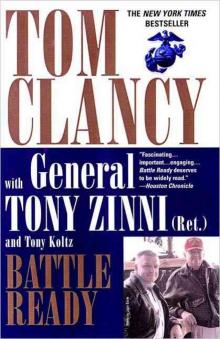 Battle Ready sic-4
Battle Ready sic-4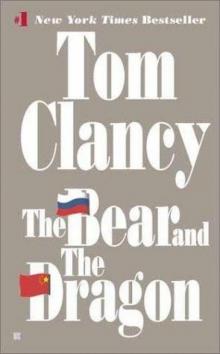 The Bear and the Dragon jrao-11
The Bear and the Dragon jrao-11 Fighter Wing: A Guided Tour of an Air Force Combat Wing tcml-3
Fighter Wing: A Guided Tour of an Air Force Combat Wing tcml-3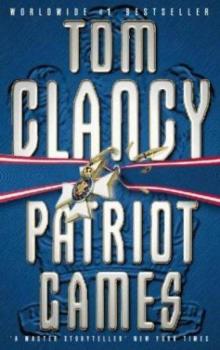 Patriot Games jr-1
Patriot Games jr-1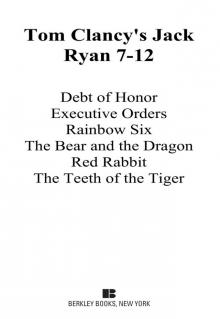 Jack Ryan Books 7-12
Jack Ryan Books 7-12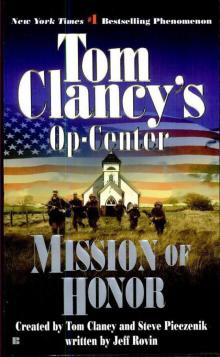 Mission of Honor o-9
Mission of Honor o-9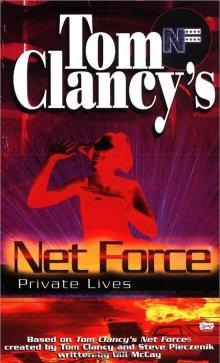 Private Lives nfe-9
Private Lives nfe-9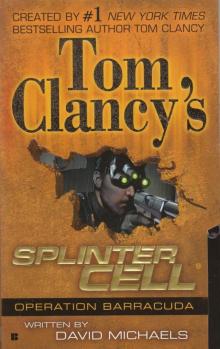 Operation Barracuda sc-2
Operation Barracuda sc-2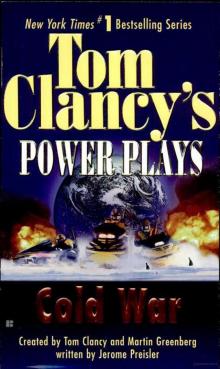 Cold War pp-5
Cold War pp-5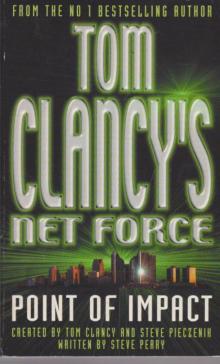 Point of Impact nf-5
Point of Impact nf-5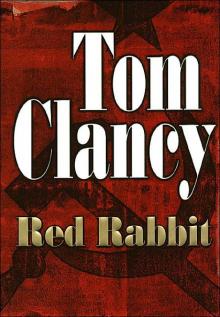 Red Rabbit jr-9
Red Rabbit jr-9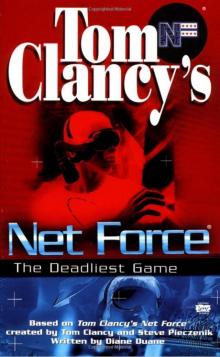 The Deadliest Game nfe-2
The Deadliest Game nfe-2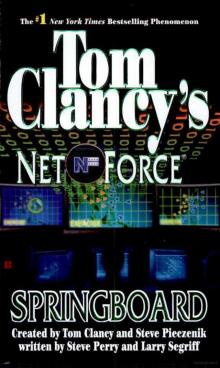 Springboard nf-9
Springboard nf-9 Safe House nfe-10
Safe House nfe-10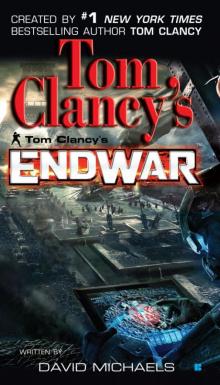 EndWar e-1
EndWar e-1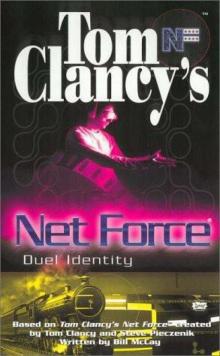 Duel Identity nfe-12
Duel Identity nfe-12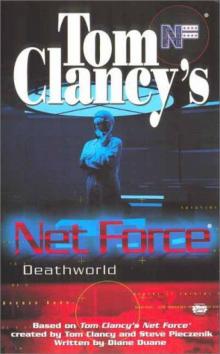 Deathworld nfe-13
Deathworld nfe-13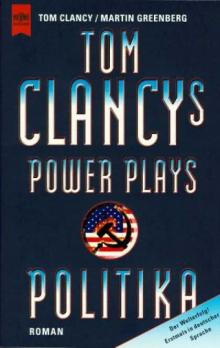 Politika pp-1
Politika pp-1 Rainbow Six jr-9
Rainbow Six jr-9 Tom Clancy's Power Plays 1 - 4
Tom Clancy's Power Plays 1 - 4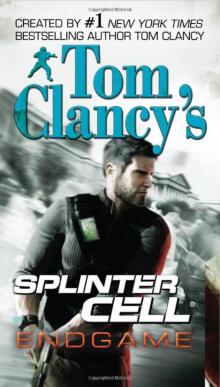 Endgame sc-6
Endgame sc-6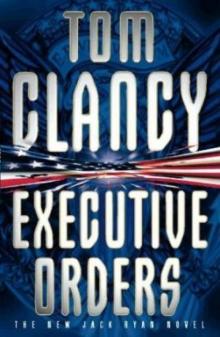 Executive Orders jr-7
Executive Orders jr-7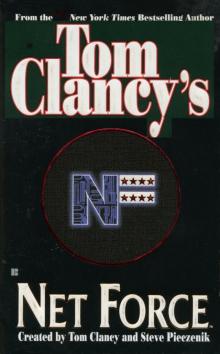 Net Force nf-1
Net Force nf-1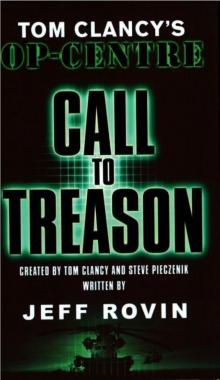 Call to Treason o-11
Call to Treason o-11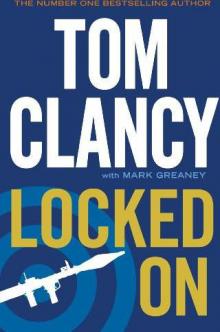 Locked On jrj-3
Locked On jrj-3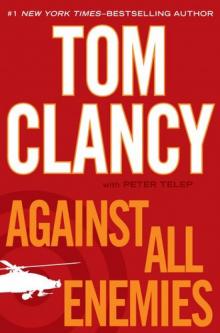 Against All Enemies
Against All Enemies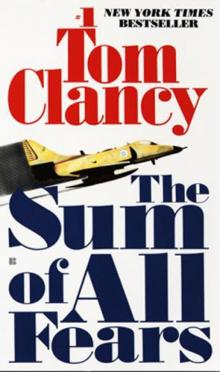 The Sum of All Fears jr-7
The Sum of All Fears jr-7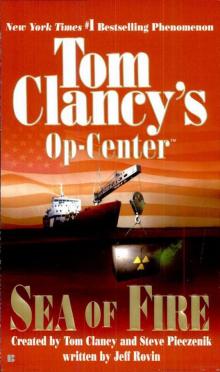 Sea of Fire o-10
Sea of Fire o-10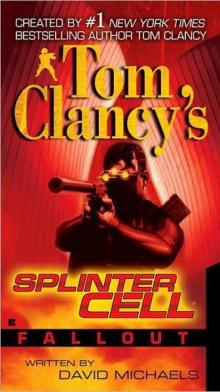 Fallout sc-4
Fallout sc-4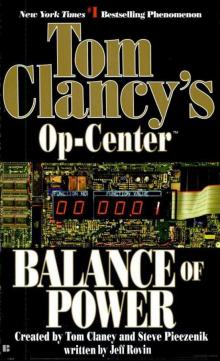 Balance of Power o-5
Balance of Power o-5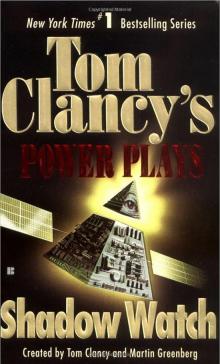 Shadow Watch pp-3
Shadow Watch pp-3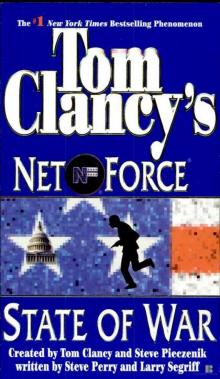 State of War nf-7
State of War nf-7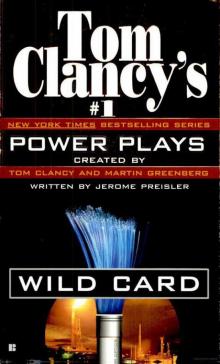 Wild Card pp-8
Wild Card pp-8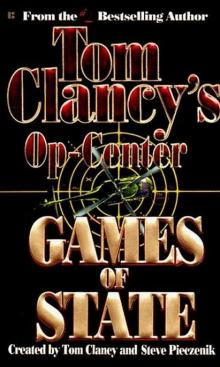 Games of State o-3
Games of State o-3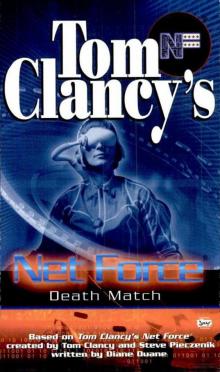 Death Match nfe-18
Death Match nfe-18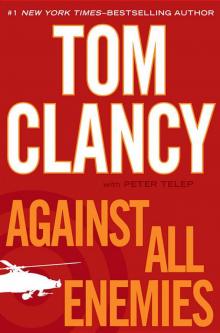 Against All Enemies mm-1
Against All Enemies mm-1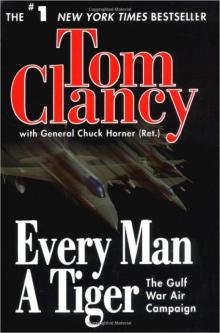 Every Man a Tiger: The Gulf War Air Campaign sic-2
Every Man a Tiger: The Gulf War Air Campaign sic-2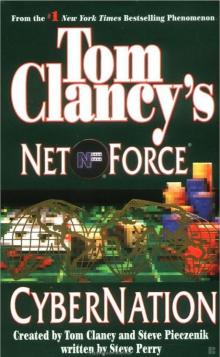 Cybernation nf-6
Cybernation nf-6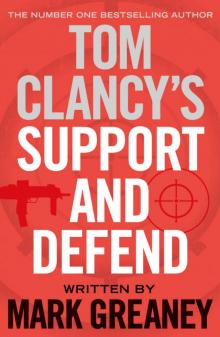 Support and Defend
Support and Defend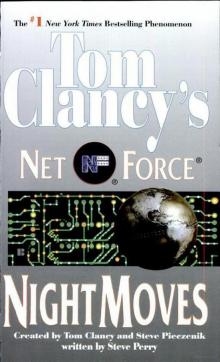 Night Moves nf-3
Night Moves nf-3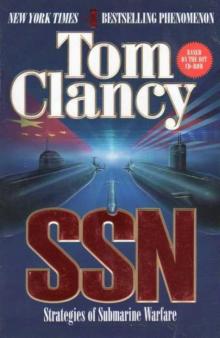 SSN
SSN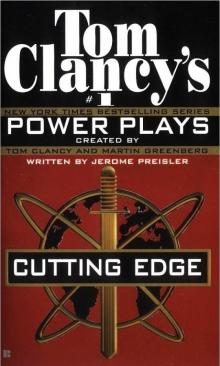 Cutting Edge pp-6
Cutting Edge pp-6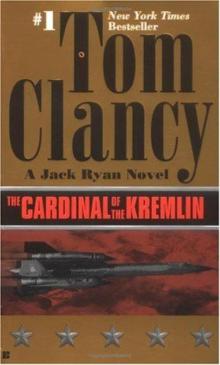 The Cardinal of the Kremlin jrao-5
The Cardinal of the Kremlin jrao-5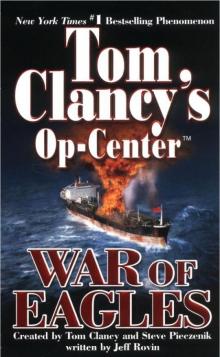 War of Eagles o-12
War of Eagles o-12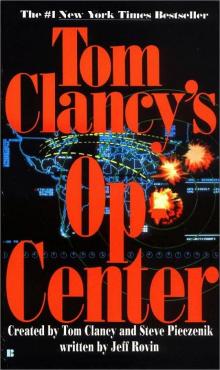 Op-Center o-1
Op-Center o-1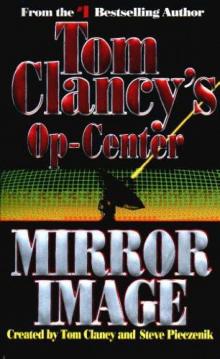 Mirror Image o-2
Mirror Image o-2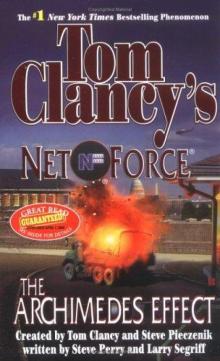 The Archimedes Effect nf-10
The Archimedes Effect nf-10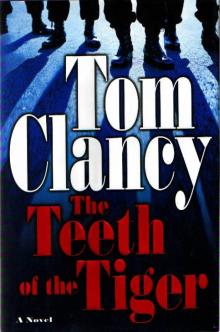 Teeth of the Tiger jrj-1
Teeth of the Tiger jrj-1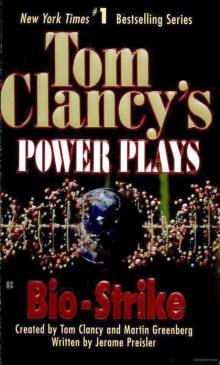 Bio-Strike pp-4
Bio-Strike pp-4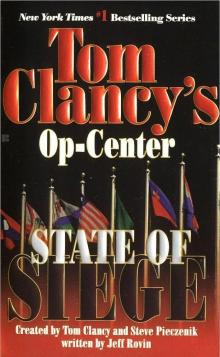 State of Siege o-6
State of Siege o-6 Debt of Honor jr-6
Debt of Honor jr-6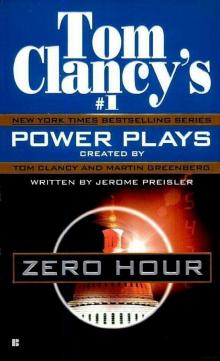 Zero Hour pp-7
Zero Hour pp-7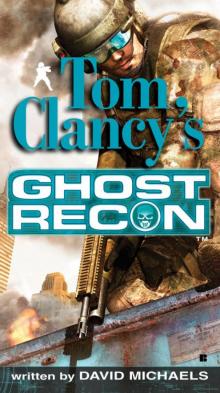 Ghost Recon gr-1
Ghost Recon gr-1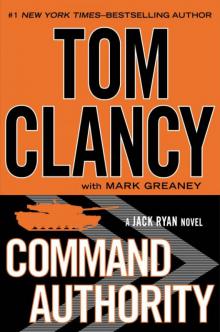 Command Authority jr-10
Command Authority jr-10 Tom Clancy's Power Plays 5 - 8
Tom Clancy's Power Plays 5 - 8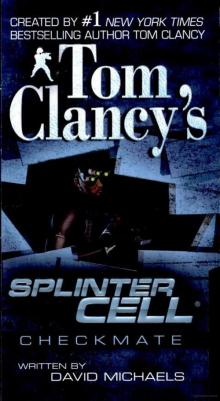 Checkmate sc-3
Checkmate sc-3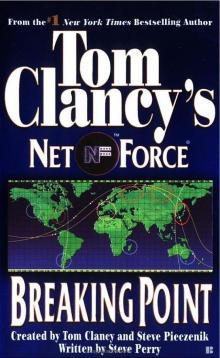 Breaking Point nf-4
Breaking Point nf-4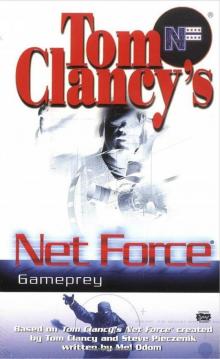 Gameprey nfe-11
Gameprey nfe-11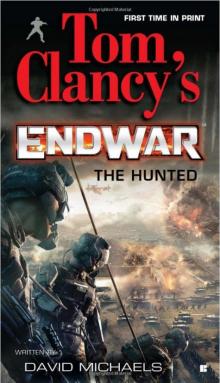 The Hunted e-2
The Hunted e-2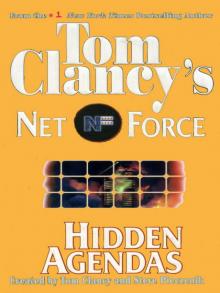 Hidden Agendas
Hidden Agendas Divide and Conquer o-7
Divide and Conquer o-7